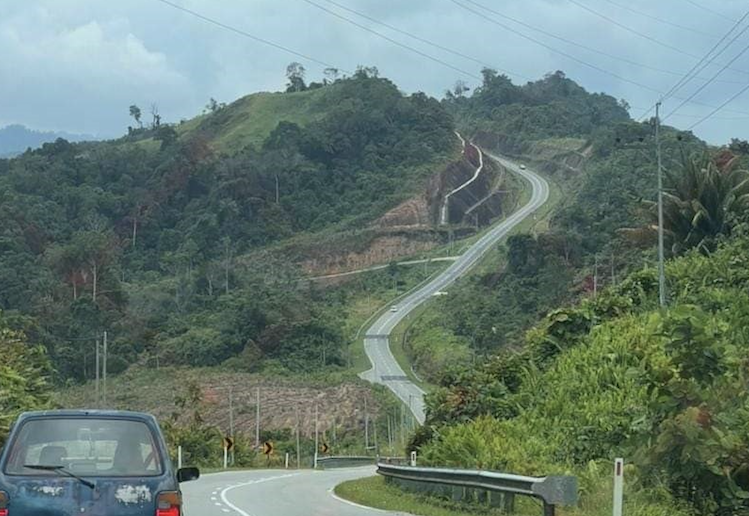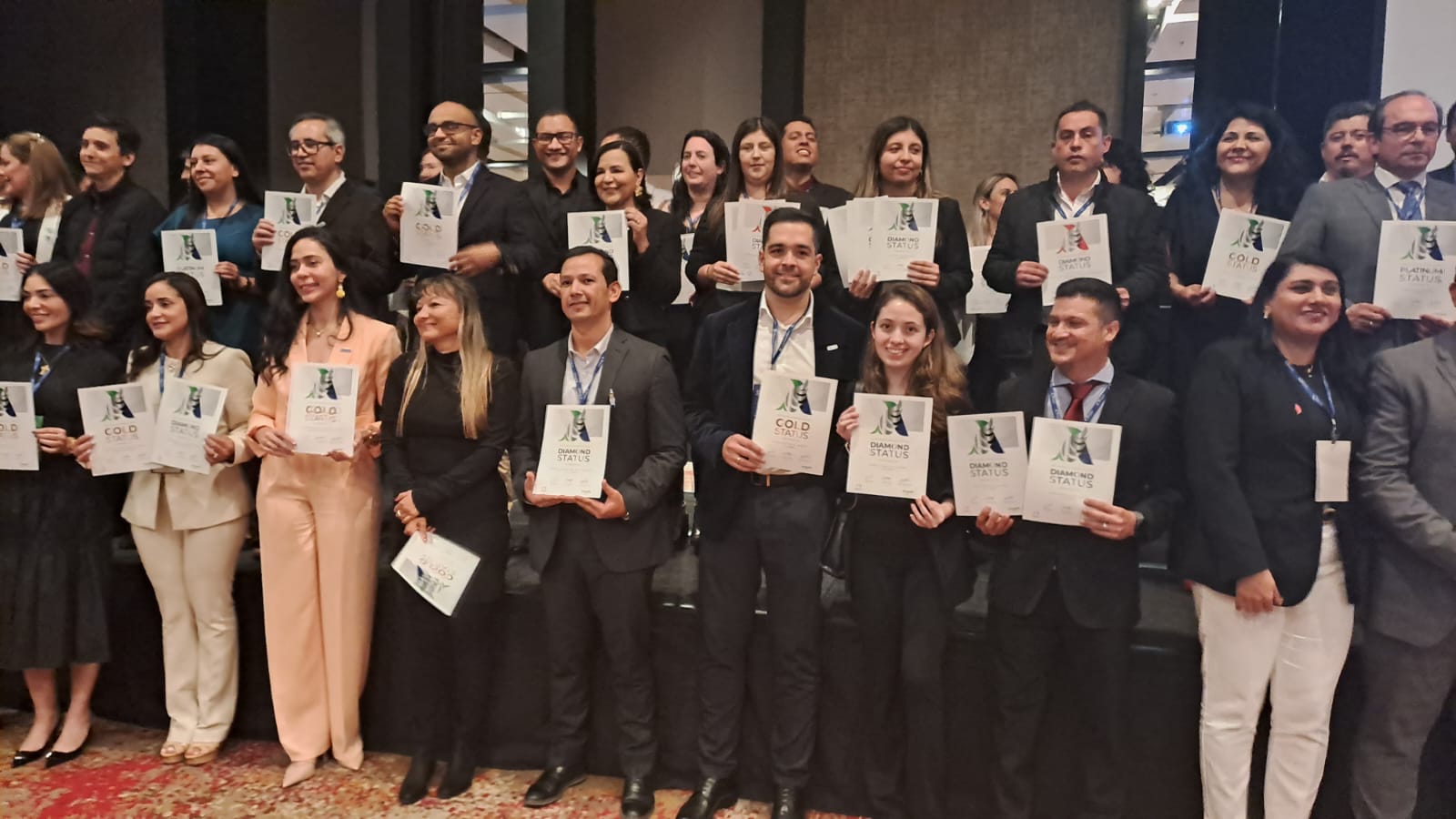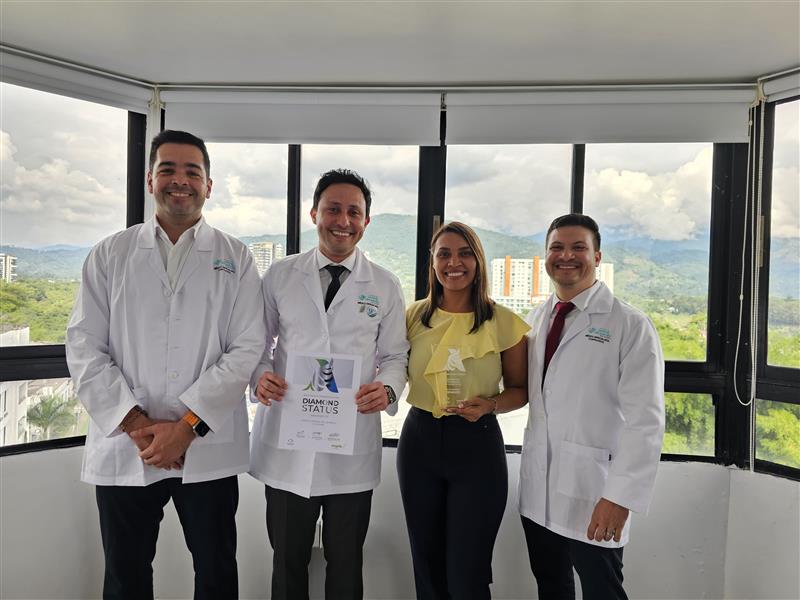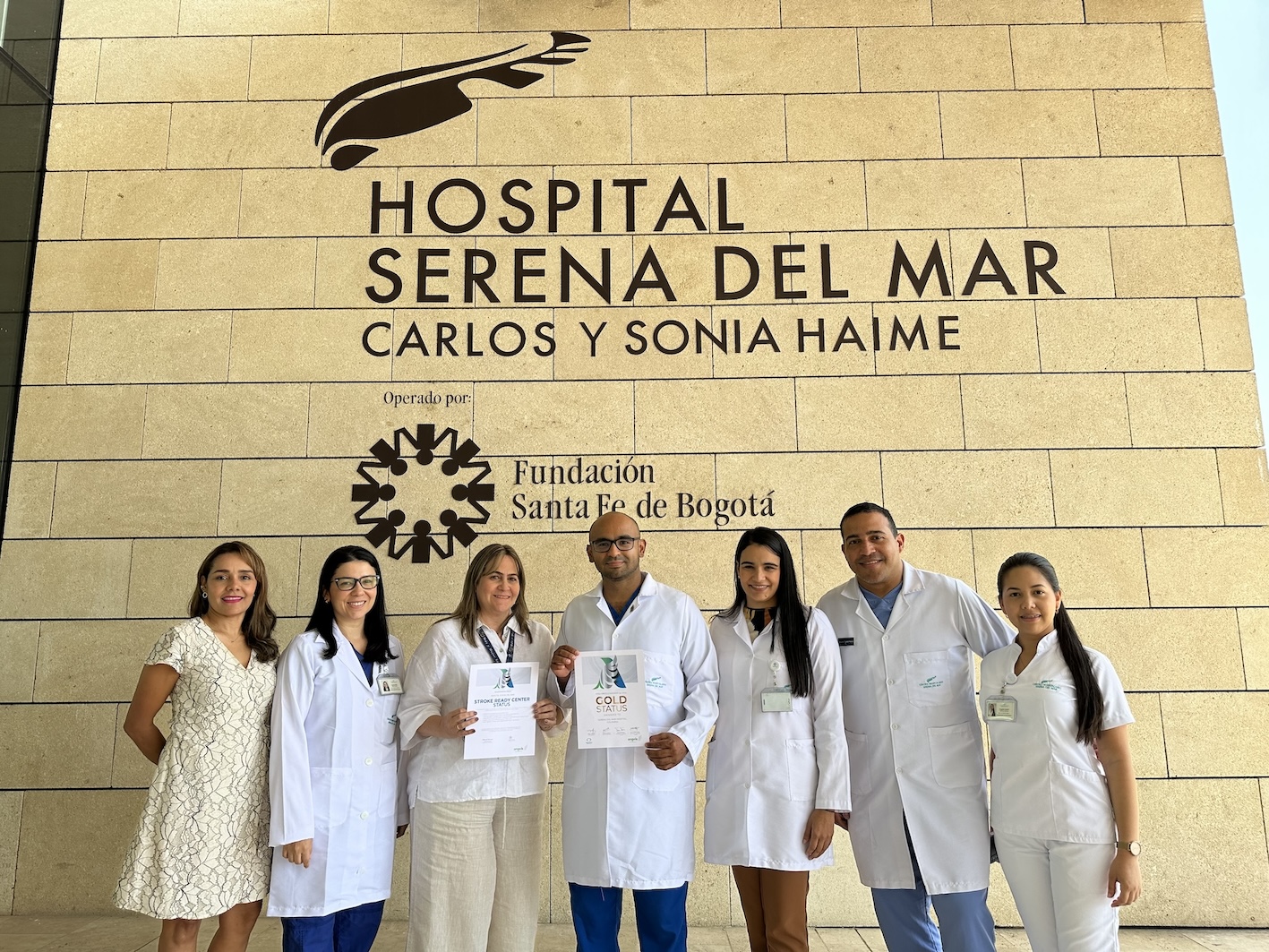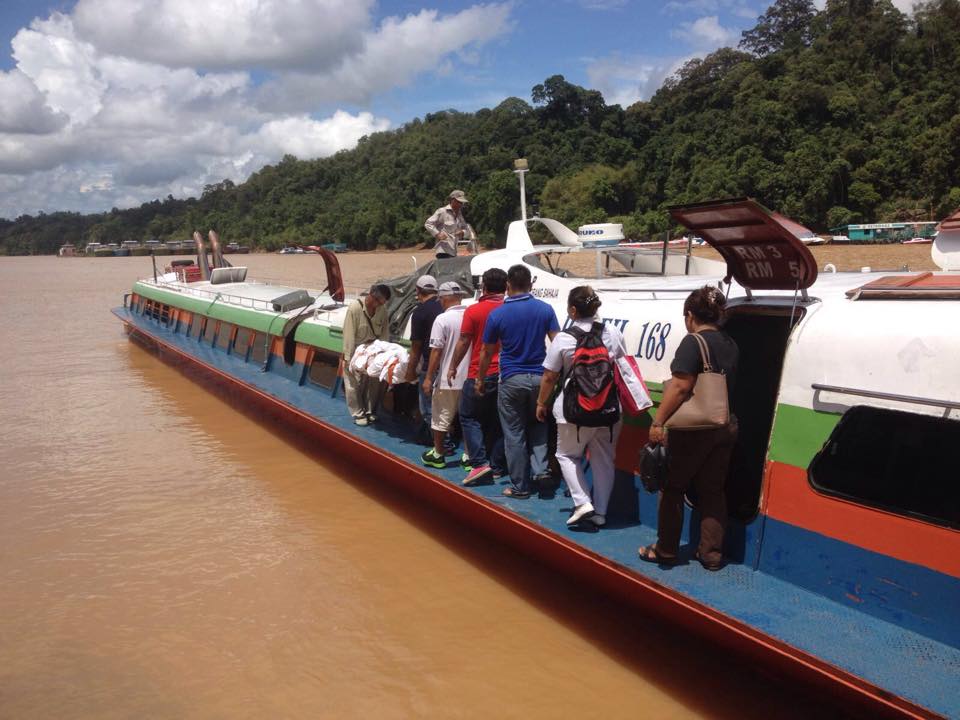
Dokážete si představit osud pacienta s cévní mozkovou příhodou, pokud by byla nejbližší nemocnice pro cévní mozkovou příhodu přístupná pouze vodní dopravou a cesta expresní lodí trvala přibližně dvě a půl hodiny?
Ještě před tak dávnou dobou to nebyl jen představovaný scénář, ale tvrdá realita pro obyvatele Kapitu v Malajsii.
Kapit je největší divize v Malajsii, která tvoří téměř třetinu celkové pozemkové plochy Sarawak, největšího státu v Malajsii. Je to hornatá oblast a téměř 80 procent území je pokryto hustými primárními lesy.
Její populace se skládá především z domorodé etnické skupiny Iban. Mladší dospělí často migrují do měst, aby hledali lepší pracovní příležitosti a zanechali starší populaci, která se nadále zapojuje do tradičních ekonomických aktivit, jako je zemědělství, rybolov a práce na dřevě. Mnozí místní stále žijí v tradičních dlouhodobých budovách hluboko v lese a mají omezený přístup k formálnímu vzdělávání.
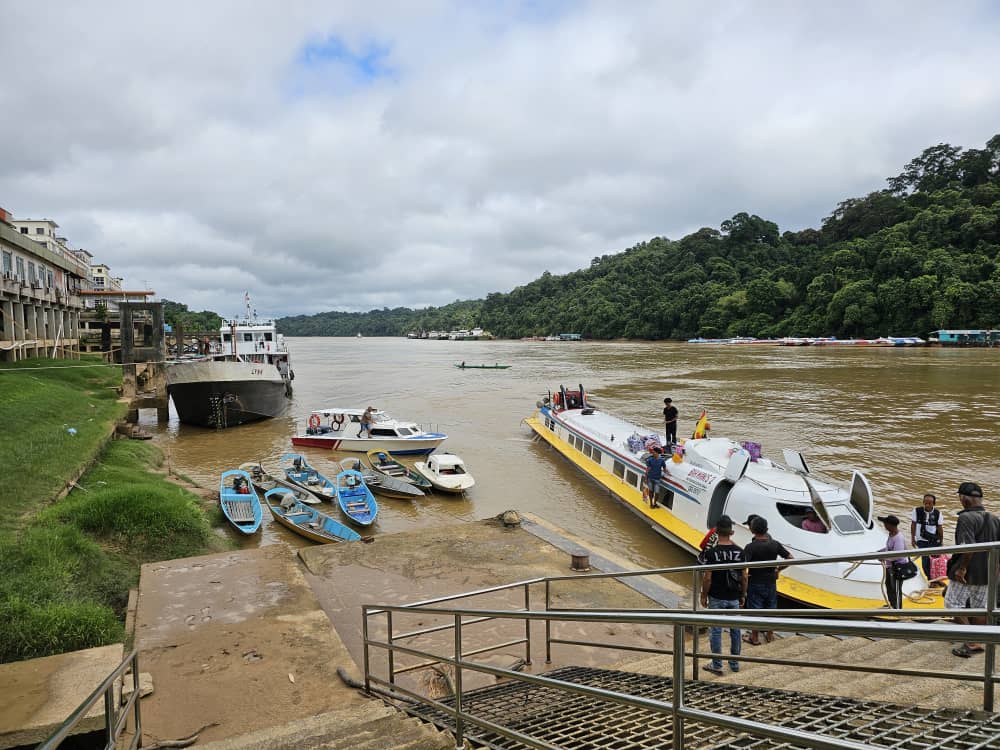
Majestátní řeka Rajang, nejdelší v Malajsii, protéká Kapitem a formuje jeho krajinu a způsob života. Před výstavbou silnice byly expresní lodě záchranným lanem. Jednalo se o jediný způsob, jak cestovat do nedalekých měst. Tyto elegantní, úzké plavidla, humorně označované jako „létající rakve“ díky svému designu a uspořádání sedadel, zůstávají ikonickým pohledem na řeku.
Koncem roku 2020 byla Kapit konečně napojena silnicí do města Sibu, kde se nachází nemocnice pro postoupení do centra Sarawaku. To otevřelo nové možnosti cestování. Ačkoli některé oblasti, jako jsou Belaga a Punan Bah, stále silně spoléhají na říční dopravu, většina obyvatel již není spojena s expresním plánem lodi a může cestovat mezi Sibu a Kapitem pomocí různých způsobů dopravy, jako jsou dodávky, autobusy a auta.
Ale i když jsou obě města od sebe vzdálena jen 160 km, cesta může být díky kopcovité silnici s jedním lanem docela dobrodružstvím. Těžká vozidla často brání cestě, způsobují zpoždění a proměňují cestu z nemocnice Kapit Hospital do nemocnice Sibu Hospital na tříhodinovou expedici.
Zdravotní péče zůstává výzvou, protože Kapitova nemocnice je jedinou nemocnicí v divizi. Pro obyvatele žijící ve velmi odlehlých částech divize může dosažení lékařské péče znamenat prudkou šestihodinovou cestu.
Oficiální záznamy uvádějí výskyt cévních mozkových příhod v Kapit přibližně 30 případů ročně, ale skutečný počet je pravděpodobně vyšší kvůli nízkému povědomí a nedostatku znalostí o příznacích cévní mozkové příhody. Mnoho obyvatel se spíše snaží vyhledat pomoc od tradičních léčitelů v rámci své komunity, než aby se vydali na dlouhou cestu do nemocnice. Situace se však v dubnu 2024 dramaticky změnila, protože v nemocnici Kapit Hospital vznikla služba pro cévní mozkovou příhodu.
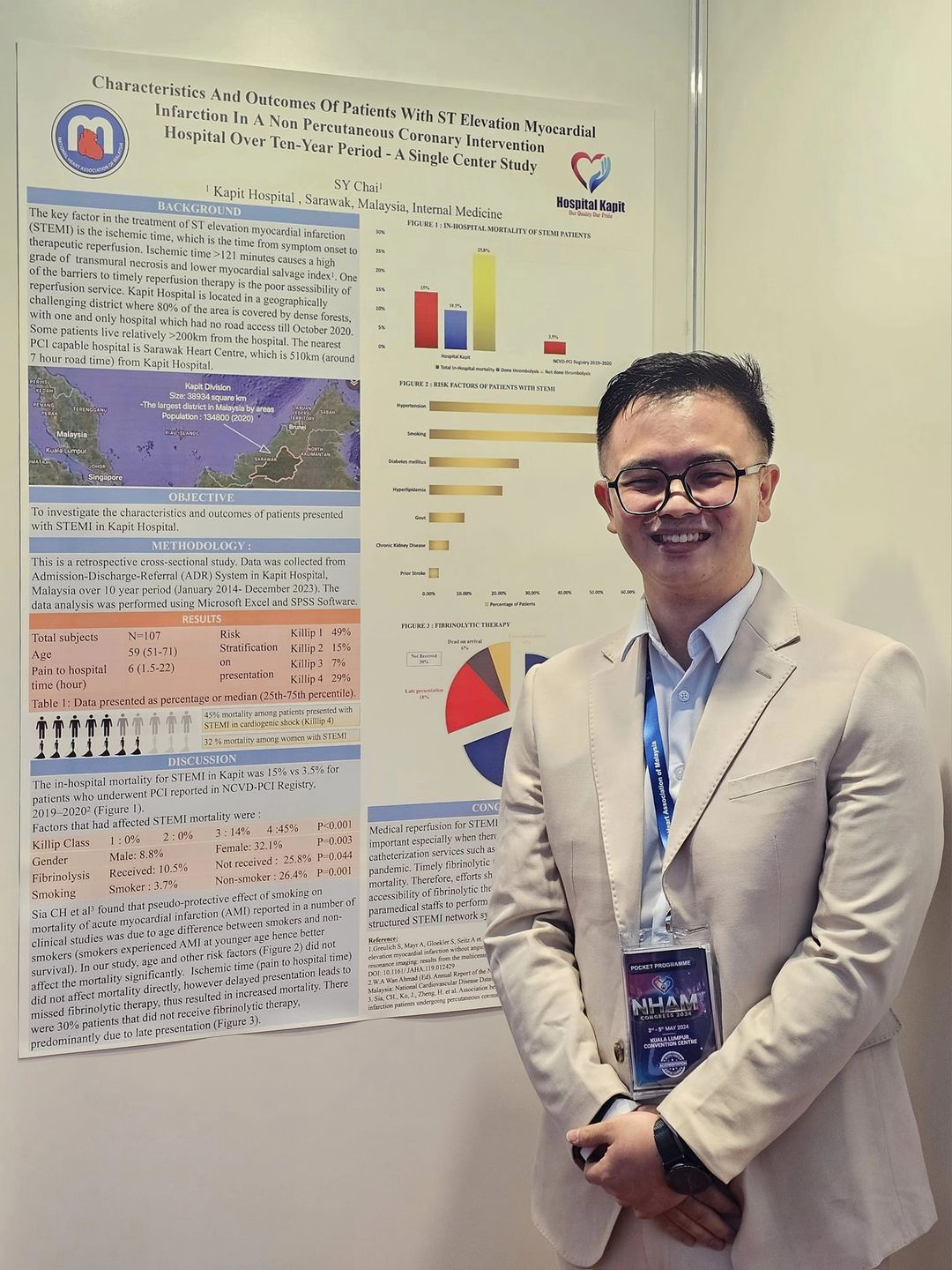
Cesta začala na začátku roku 2024, kdy doktor Chai Siew Yap začal zakládat multidisciplinární tým pro cévní mozkovou příhodu a protokol pro cévní mozkovou příhodu pro svou nemocnici. Jeho projekt se líbil podpoře ředitele nemocnice, Dr. Francise Lee Ngieho Pinga, a dostal pokyny od navštěvujícího neurologa z nemocnice Sibu, Dr. Benjamina Ng. Hana Sima.
Dr. Chai, který původně pochází z firmy Pusing v malajském Peraku, si vybral kariéru v medicíně pod vlivem své sestry, která je nyní pediatrem. Ale byl to jeho osobní bitva během jeho dospívajících let s Ewingovým sarkomem, vzácnou a agresivní formou rakoviny, která ho donutila stát se oddaným a soucitným lékařem.
Když pracoval jako juniorský lékař daleko od svého rodného města, dostal zprávu, že jeho matce byla diagnostikována vaskulární demence, což je stav způsobený mozkovou mrtvicí. Sledovat, jak se paměť matky pomalu zhoršuje, dokud již nedokáže poznat svého syna, zanechalo mu na srdci nesmazatelnou stopu.
Stejně jako se dr. Chai usadil na pozici interního lékaře v nemocnici Kapit Hospital, tragédie znovu udeřila, když jeho otec prodělal oslabující cévní mozkovou příhodu, takže byl paralyzovaný a nebyl schopen se o sebe postarat. Tyto hluboké zkušenosti pouze posílily odhodlání dr. Chaiho udělat rozdíl a podpořily jeho odhodlání zavést v nemocnici službu trombolýzy při cévní mozkové příhodě. Když nemocnice Kapit v únoru 2024 konečně obdržela CT skener, nic mu nestálo v cestě.
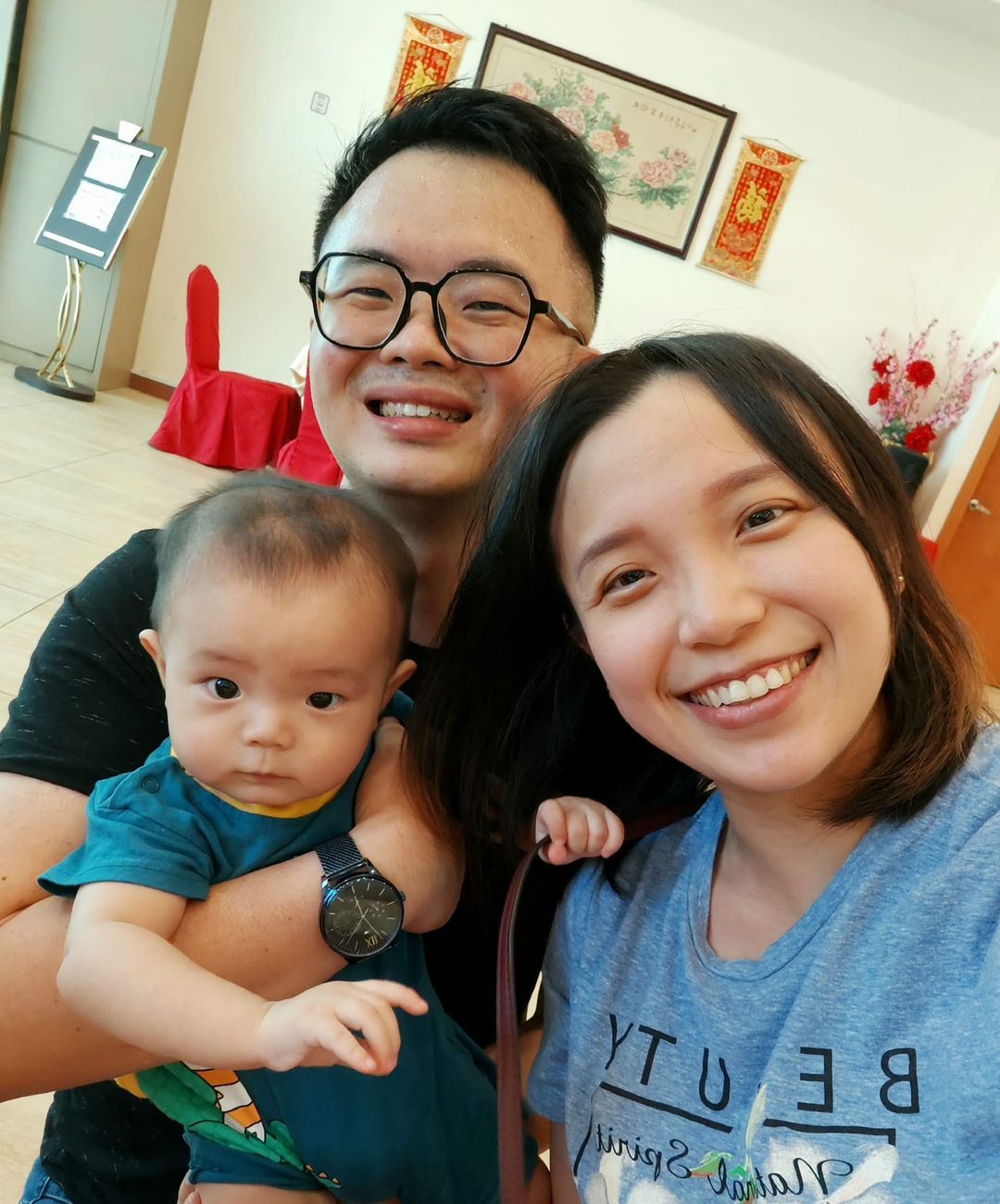
Klíčovým spojením mezi nemocnicí Kapit a iniciativou Angels Initiative byl MUDr. Benjamin z nemocnice Sibu, kde jsem tehdy pracoval jako konzultant. I když jsem o Kapitovi nikdy neslyšel, byl jsem více než připraven podpořit nemocnici základními zdroji a nástroji pro transformaci péče o cévní mozkovou příhodu v tomto odlehlém městě.
Během mého prvního virtuálního hovoru s týmem pro cévní mozkovou příhodu v nemocnici jsem zjistil, že již mají zavedenou cestu pro cévní mozkovou příhodu, což byl slibný začátek. Navrhl jsem provést simulaci cévní mozkové příhody, která týmu poskytne kontrolované prostředí pro procvičování a zdokonalení reakce na nouzové situace při cévní mozkové příhodě. Myšlenka byla pro ně nadšená a dohodli jsme se na termínu simulace.
Abych nastartoval povědomí komunity v Kapitu, poslal jsem do nemocnice hromadu informací o cévní mozkové příhodě a brožury prostřednictvím kurýra.
Nemocnice Kapit dosáhla zdravotnického milníku během prvního týdne od spuštění služby pro cévní mozkovou příhodu. Prvním pacientem léčeným trombolýzou nově vymačkaným týmem pro cévní mozkovou příhodu byl 101letý pán, který byl náhodou dědečkem jedné ze sester. Navzdory tomu, že žil více než sto let, byl před cévní mozkovou příhodou aktivní a nezávislý. Do nemocnice se dostavil 2 hodiny a 40 minut po slabosti. Jeho skóre NIHSS při přijetí bylo 11, při propuštění se zlepšilo na 9, s odpovídajícím skóre MRS 4. V současné době podstupuje ambulantní rehabilitaci cévní mozkové příhody.
Když dorazilo datum simulace cévní mozkové příhody, vydal jsem se na dvouhodinový let do Sibu, po kterém následoval ranní výlet do Kapita. Pronajal jsem si taxi na dvou a půlhodinovou jízdu, připravené s léky na pohybovou nemoc, abych zvládl větrné a kopcovité cesty. Přestože byl řidič místní a dobře se seznámil s komunikací, mnoho zvratů a zatáček v hustém lese si vyžádalo jeho plnou pozornost.
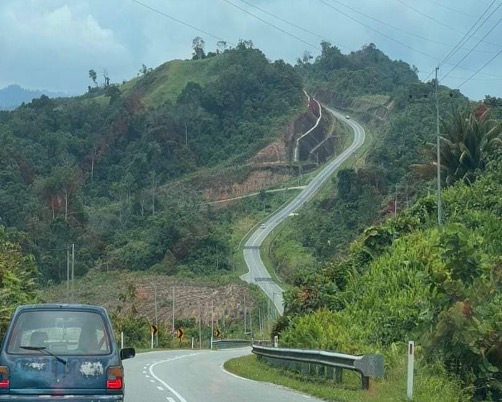
Po příjezdu do Kapita mě srdečně přivítal tým nemocnice, který chtěl začít simulaci cévní mozkové příhody. V simulačním scénáři byl „pacient“ transportován sanitkou. Nemocnice byla předem upozorněna a tým pro cévní mozkovou příhodu byl připraven, když pacient dorazil. Bylo obětováno 5 minut dopravit pacienta na CT sken v jiném bloku a jakmile bylo rozhodnuto o léčbě, byl pacient přeložen na JIP (v jiném bloku, na jiné úrovni) k zahájení léčby. Během následující diskuse jsme mluvili o způsobech, jak tyto překážky překonat – včetně jednoduchých opravných prostředků, jako je vyslání někoho před sebe, aby zavolal a držel výtah, aby se eliminovala čekací doba.
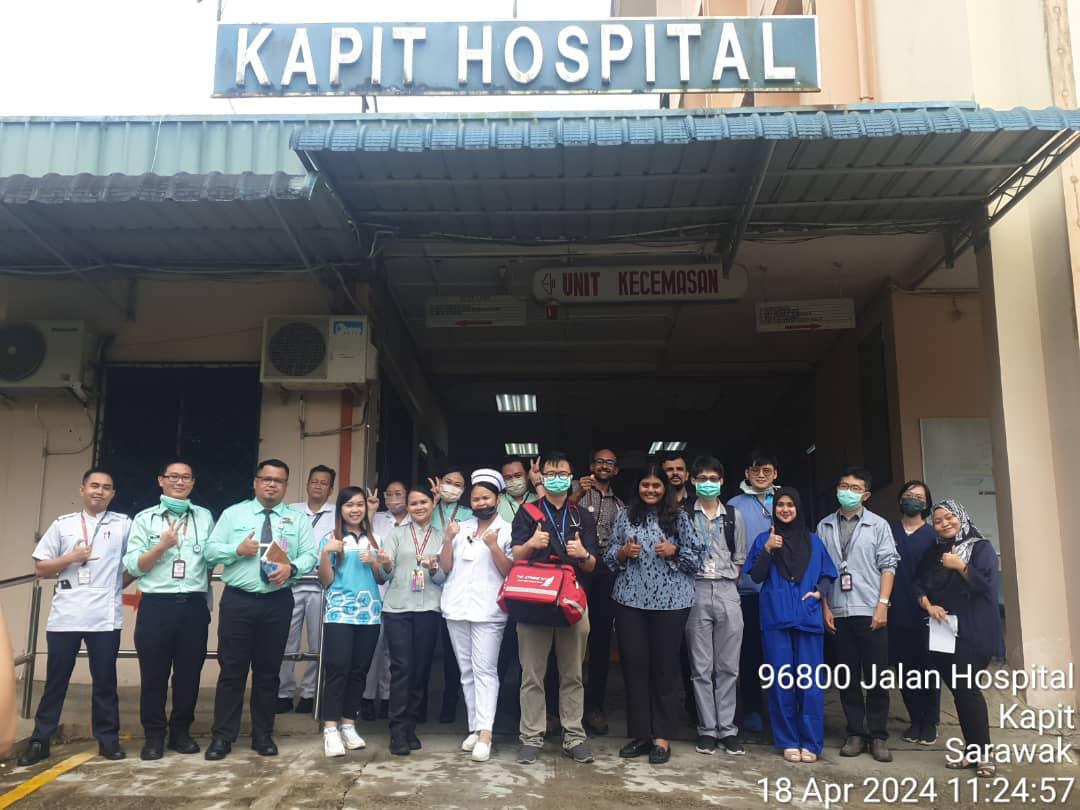
Zpáteční cesta, další dvě a půl hodiny na stejných větrných silnicích, poskytla dostatek času na reflexi. Navzdory fyzickému mýtu jsem věděla, že jsem součástí poslání přinášet specializovanou péči do této nedostatečně obsluhované oblasti, která se nachází hluboko uvnitř Sarawaku.
Od mé návštěvy nemocnice Kapit zkrátila dobu od dveří k jehle z 60 na 50 minut. Upřednostnili přísná a průběžná školení personálu, aby zajistili, že každý člen týmu má odborné znalosti a důvěru k nezávislé identifikaci pacientů s cévní mozkovou příhodou, zahájení protokolů cévní mozkové příhody, provádění hodnocení NIHSS, interpretaci CT skenů a podávání trombolytického léku. Zavázali se také rozšířit svou komunitu, aby zvýšili povědomí a podpořili proaktivní chování zaměřené na zdraví.
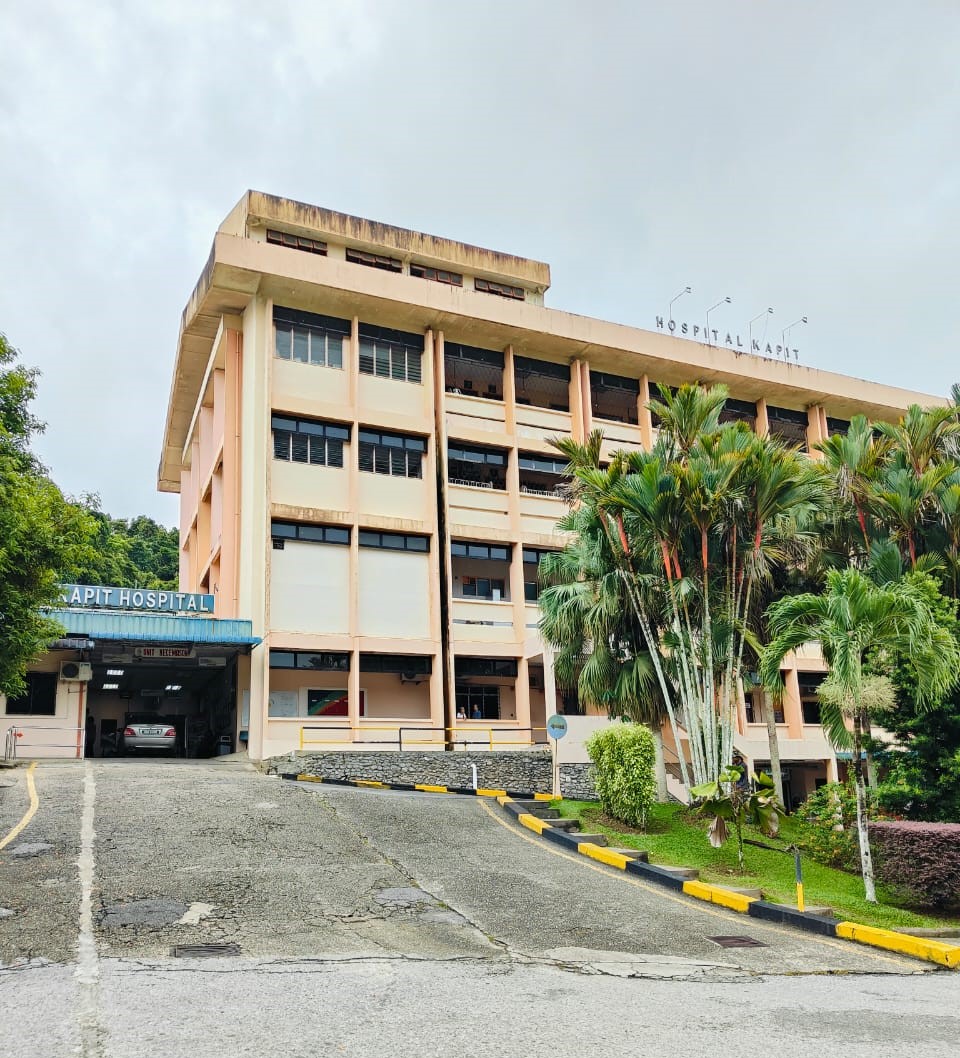
Cesta k transformaci péče o cévní mozkovou příhodu v Kapitu právě začala, ale již je symbolem naděje a modelem dokonalosti pro ostatní regiony, které je třeba napodobit. Kroky učiněné v tak krátkém období jsou mocnou připomínkou toho, že díky odhodlání a správným zdrojům můžeme změnit osud pacientů s cévní mozkovou příhodou k lepšímu, jednotná komunita.
